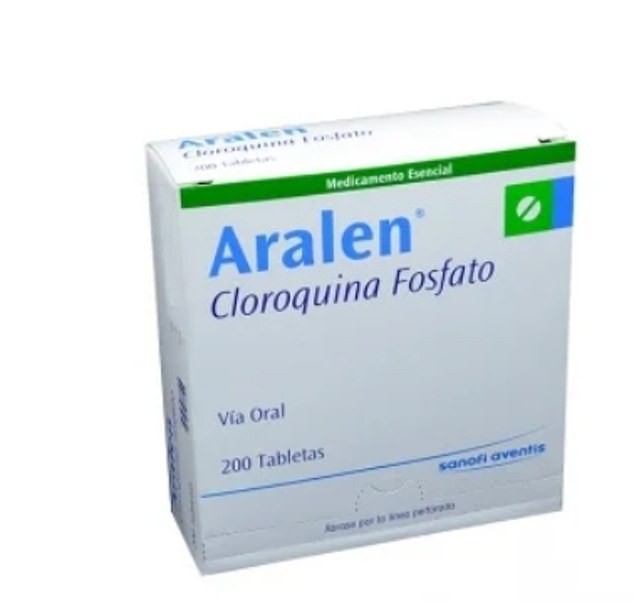
Contents
Chloroquine (Aralen) vs. Hydroxychloroquine (Plaquenil)
Chloroquine (Aralen) is an anti-malarial drug used to treat malaria and amebiasis. It suppresses infection, stops attacks, and lengthens the time between treatment and relapse.
It is similar to hydroxychloroquine (Plaquenil), and both drugs are being investigated for COVID-19 treatment.
Chloroquine’s mechanism of action is unknown, but it may prevent malarial parasites from metabolizing hemoglobin in human red blood cells. It is effective against Plasmodium vivax, P. malariae, P. ovale, and susceptible strains of P. falciparum.
Chloroquine is not effective for malaria prevention, but is used off-label to treat porphyria cutanea tarda.
Hydroxychloroquine (Plaquenil) is an anti-malarial drug used to treat malaria, lupus erythematosus, and rheumatoid arthritis. It is similar to chloroquine (Aralen) and its mechanism of action is unknown. It is effective against Plasmodium vivax, P. malariae, P. ovale, and susceptible strains of P. falciparum.
Side Effects of Chloroquine and Hydroxychloroquine
Chloroquine
Common side effects include irreversible retinal damage, deafness, tinnitus, reduced hearing, increased liver enzymes, anorexia, nausea, vomiting, and diarrhea.
Rare side effects include personality changes, depression, hypotension, polyneuritis, extrapyramidal disorders, psychosis, pancytopenia, aplastic anemia, thrombocytopenia, serious allergic reactions, muscle damage, hepatitis, maculopathy, and macular degeneration.
Other Adverse Reactions and Side Effects of Aralen
Rare reports have been made of severe skin reactions, worsening of psoriasis and porphyria, retinal or visual field changes, chloroquine resistance, retinopathy, acute extrapyramidal disorders, muscular weakness, and fatalities in children from accidental ingestion.
Hydroxychloroquine
Side effects include irritability, headache, weakness, hair lightening or loss, stomach upset, nausea, dizziness, muscle pain, rash, itching, and rare bone marrow toxicity. Serious eye toxicity may occur, affecting the retina and causing color blindness and vision loss. Regular eye exams are recommended. Hydroxychloroquine may also worsen psoriasis.
Dosage for Chloroquine vs. Hydroxychloroquine
Chloroquine
For acute malaria attacks in adults, the initial dose is 1 g followed by an additional 500 mg after 6 to 8 hours, then 500 mg at 24 and 48 hours after the first dose. The dose for treating children is 10 mg/kg for the first dose, then 5 mg/kg daily for 2 days.
The dose for treating intestinal amebiasis is 1 g daily for two days, followed by 500 mg daily for at least two to three weeks. Chloroquine is usually combined with an effective intestinal amebicide.
Hydroxychloroquine
The usual adult dose for treating malaria is 800 mg initially, followed by 400 mg 6-8 hours later, and then 400 mg at 24 and 48 hours. The dose for malaria prevention is 400 mg every week. For rheumatoid arthritis, the recommended dose is 400-600 mg daily for 4-12 weeks, followed by 200-400 mg daily. For lupus erythematosus, the dose is 400 mg once or twice daily for several weeks, then 200-400 mg daily. Hydroxychloroquine should be taken with food or milk to reduce stomach upset.
Drug Interactions with Chloroquine and Hydroxychloroquine
Chloroquine
Antacids and kaolin can reduce absorption of chloroquine. Cimetidine can block its breakdown. Chloroquine significantly reduces blood levels of ampicillin and may increase cyclosporine blood levels. Combining chloroquine and mefloquine may increase the risk of seizures. Chloroquine can also reduce the antibody response to rabies vaccine.
Hydroxychloroquine
Combining hydroxychloroquine with penicillamine may increase penicillamine levels. Combining it with telbivudine may increase the risk of muscle pain. Hydroxychloroquine suppresses the immune system and should not be combined with other immune-suppressing drugs or live vaccines.
Safety during Pregnancy and Breastfeeding
Chloroquine
The safety and efficacy of chloroquine during pregnancy have not been studied. It is excreted in breast milk.
Hydroxychloroquine
Hydroxychloroquine should only be used in pregnant women for malaria prevention or treatment. It may be secreted in breast milk and cause side effects in the infant.
By clicking Submit, I agree to the MedicineNet’s Terms & Conditions & Privacy Policy and understand that I may opt out of MedicineNet’s subscriptions at any time.
Summary
Chloroquine (Aralen) and hydroxychloroquine (Plaquenil) are anti-malarial drugs used to treat malaria. They are also being investigated for COVID-19 treatment, but study results have been mixed.


